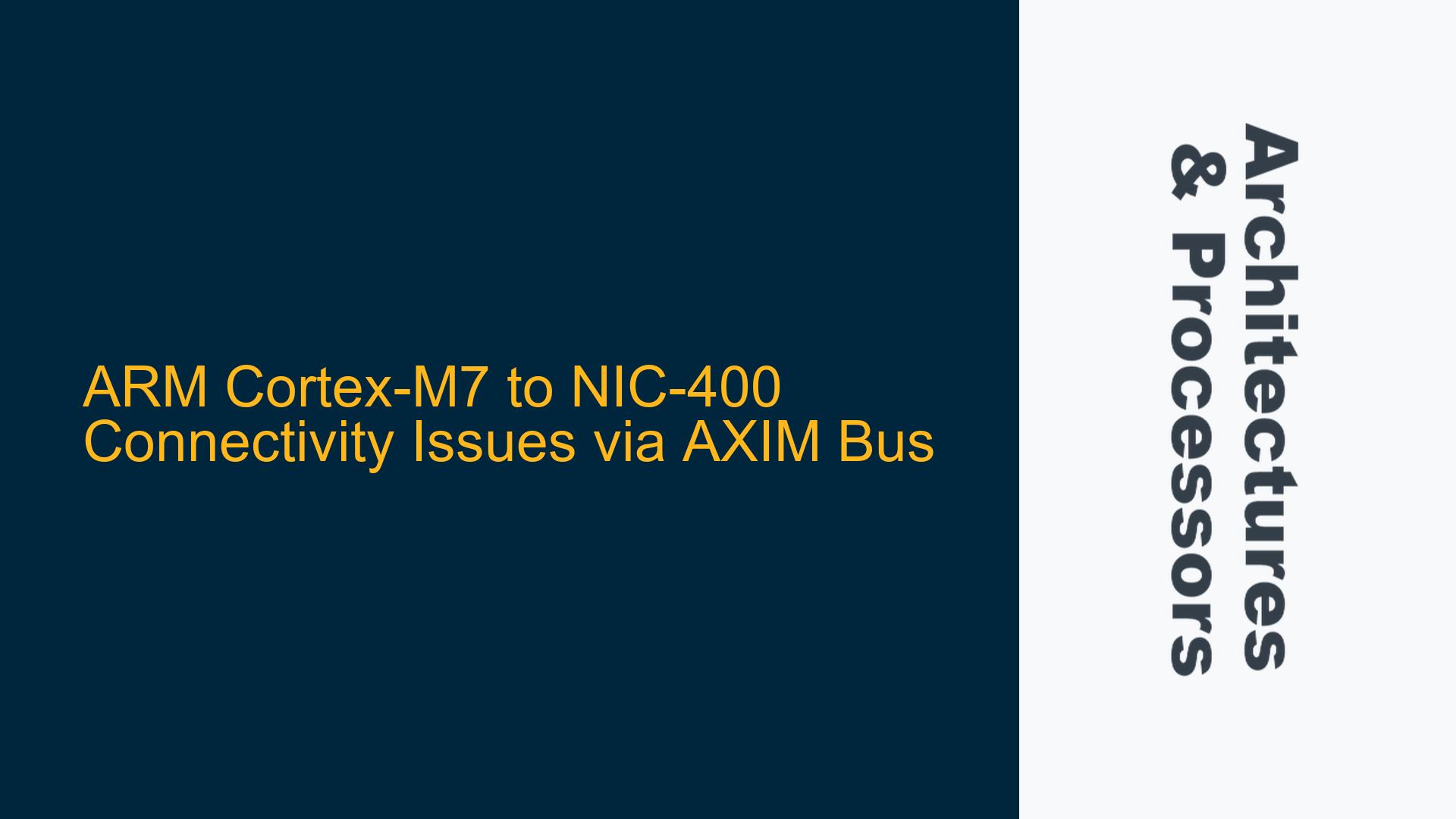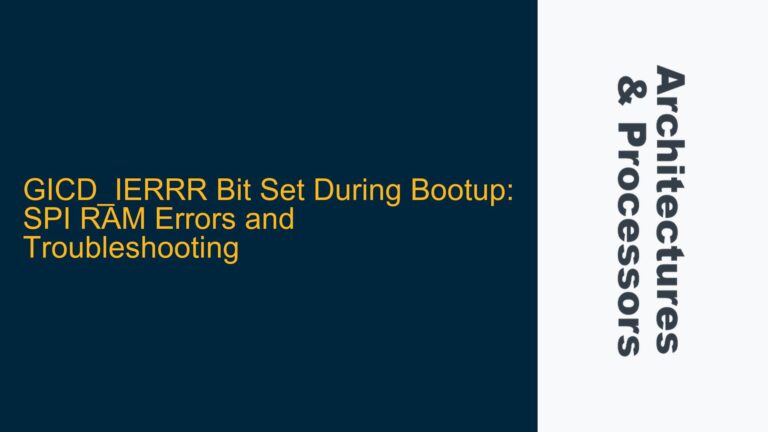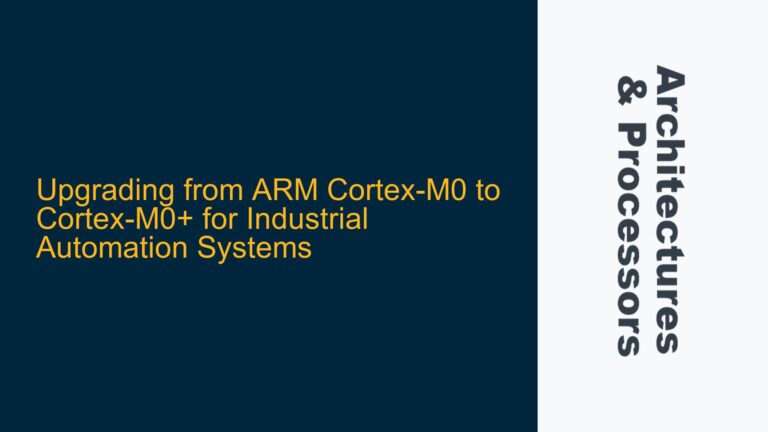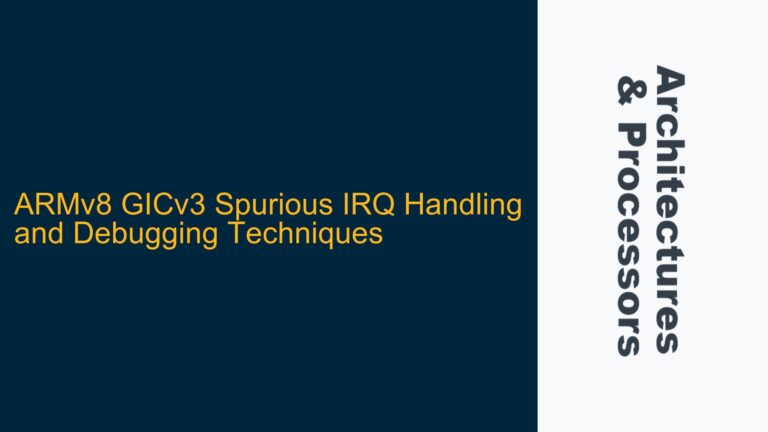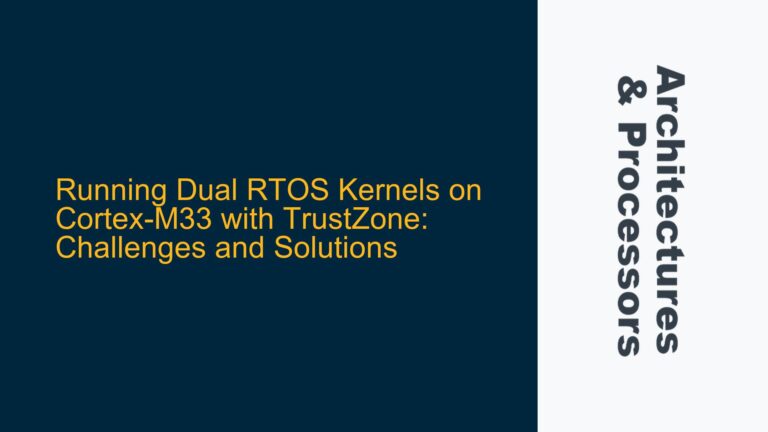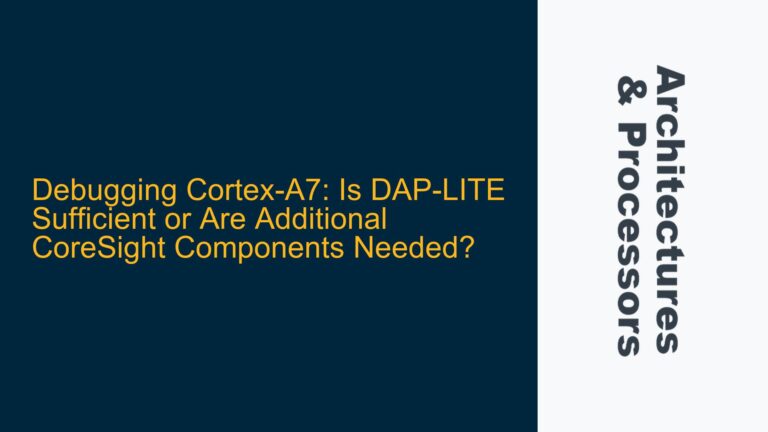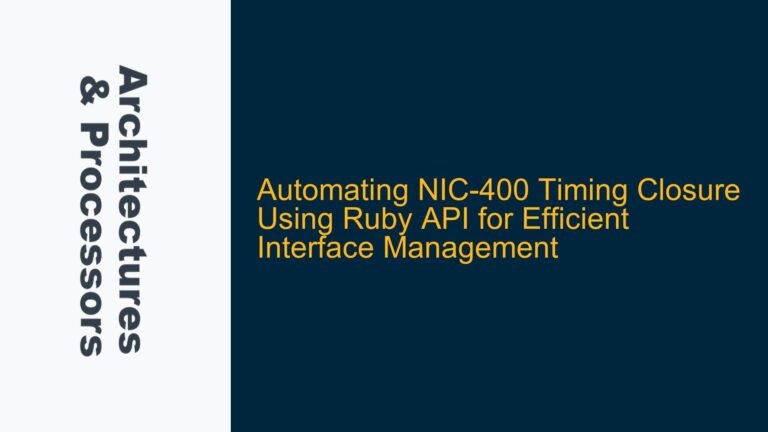ARM Cortex-M7 AXIM Bus Signal Compatibility with NIC-400
The ARM Cortex-M7 processor, known for its high-performance capabilities, utilizes the Advanced eXtensible Interface Master (AXIM) bus to communicate with external peripherals and memory systems. The AXIM bus is an extension of the AXI4 protocol, tailored for the Cortex-M7’s specific requirements. However, when interfacing the Cortex-M7’s AXIM bus with the NIC-400 interconnect, a Network Interconnect from ARM designed to manage multiple AXI4-compliant masters and slaves, compatibility issues arise due to the additional signals present on the AXIM bus that are not part of the standard AXI4 protocol.
The AXIM bus includes signals such as AWUSER, ARUSER, WUSER, and RUSER, which are used for additional user-defined information that can be passed along with the address, write data, and read data channels. These signals are not part of the AXI4 specification, and the NIC-400, being a standard AXI4 interconnect, does not natively support these signals. This discrepancy can lead to connectivity issues, where the NIC-400 may not correctly interpret or handle the additional signals, potentially causing data corruption, transaction failures, or system instability.
Understanding the nature of these additional signals and how they are intended to be used in the Cortex-M7’s AXIM bus is crucial. The AWUSER and ARUSER signals are typically used to pass additional information about the transaction, such as security attributes or priority levels, while the WUSER and RUSER signals can carry user-defined data associated with the write and read data, respectively. These signals are essential for certain advanced features of the Cortex-M7, such as TrustZone security extensions or custom priority-based arbitration schemes.
NIC-400 Protocol Conversion and Signal Handling Limitations
The NIC-400 interconnect is designed to handle standard AXI4 transactions, which do not include the user-defined signals present in the Cortex-M7’s AXIM bus. When the AXIM bus is connected to the NIC-400, the additional signals must be either dropped, ignored, or converted in a way that the NIC-400 can handle. This conversion process is not trivial and requires careful consideration of the system’s requirements and the potential impact on performance and functionality.
One possible cause of the issue is the lack of a proper signal conversion mechanism between the AXIM bus and the NIC-400. If the additional signals are simply dropped, the system may lose critical information, leading to incorrect transaction handling. For example, if the AWUSER signal, which may carry security attributes, is ignored, the NIC-400 might not enforce the necessary security checks, potentially exposing the system to security vulnerabilities.
Another potential cause is the timing and synchronization of the additional signals with the standard AXI4 signals. The AXIM bus may assert these signals at different times or in a different sequence compared to the standard AXI4 signals, leading to mismatches in the transaction handling by the NIC-400. This can result in incomplete or incorrect transactions, causing data corruption or system crashes.
Furthermore, the NIC-400’s arbitration and routing mechanisms may not be designed to handle the additional information carried by the AXIM bus’s user-defined signals. This can lead to suboptimal routing decisions, where transactions are not prioritized correctly, or where security attributes are not enforced as intended. This can degrade system performance and compromise security.
Implementing Signal Conversion and Synchronization Mechanisms
To address the compatibility issues between the Cortex-M7’s AXIM bus and the NIC-400 interconnect, a signal conversion and synchronization mechanism must be implemented. This mechanism should ensure that the additional signals on the AXIM bus are either converted into a format that the NIC-400 can handle or that they are properly synchronized with the standard AXI4 signals to avoid timing mismatches.
One approach is to implement a bridge or adapter between the AXIM bus and the NIC-400. This bridge would be responsible for converting the additional signals into a format that the NIC-400 can understand. For example, the AWUSER and ARUSER signals could be mapped to specific bits in the AXI4 AxPROT or AxCACHE signals, which are part of the standard AXI4 protocol and can carry similar information about the transaction’s attributes. Similarly, the WUSER and RUSER signals could be mapped to specific bits in the WDATA and RDATA signals, allowing the user-defined data to be carried along with the standard data.
Another approach is to implement a signal synchronization mechanism that ensures the additional signals are asserted and de-asserted in sync with the standard AXI4 signals. This can be achieved using flip-flops or other synchronization circuits that align the timing of the additional signals with the AXI4 transaction phases. This ensures that the NIC-400 receives a coherent set of signals for each transaction, reducing the risk of mismatches and errors.
Additionally, the NIC-400’s configuration should be reviewed and adjusted to accommodate the additional information carried by the AXIM bus’s user-defined signals. This may involve modifying the arbitration and routing algorithms to take into account the priority levels or security attributes carried by the AWUSER and ARUSER signals. This ensures that transactions are handled correctly and that the system’s performance and security requirements are met.
In conclusion, the compatibility issues between the ARM Cortex-M7’s AXIM bus and the NIC-400 interconnect stem from the additional signals present on the AXIM bus that are not part of the standard AXI4 protocol. These signals must be properly converted and synchronized to ensure correct transaction handling by the NIC-400. Implementing a bridge or adapter, along with signal synchronization mechanisms and appropriate NIC-400 configuration adjustments, can resolve these issues and ensure reliable and secure system operation.
